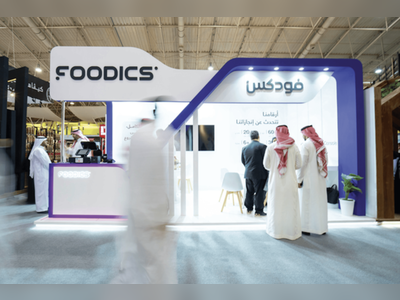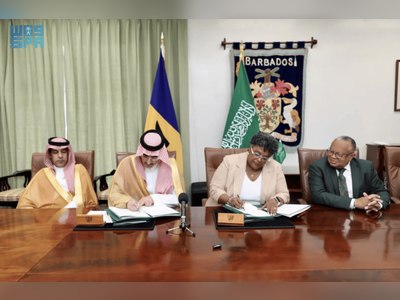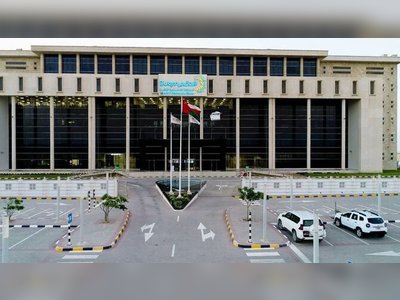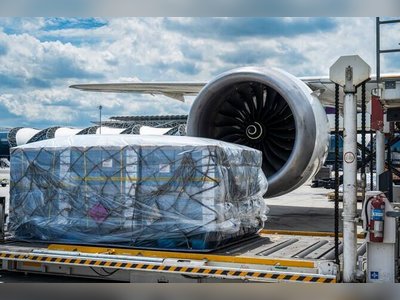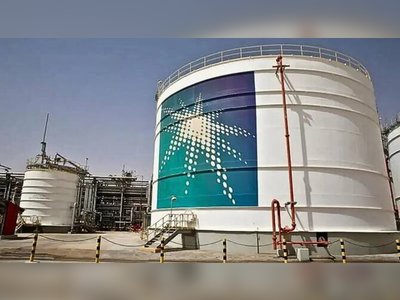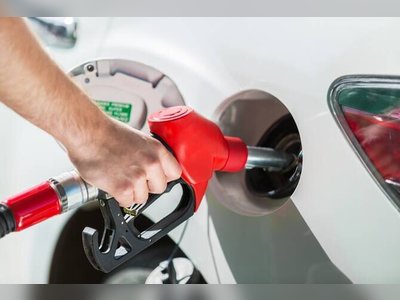
Saudi Economy Expands by 3.9% in Q2, Led by Non-Oil Sector Growth
Strong Performance in Non-Oil Activities Drives Economic Expansion
Saudi Arabia's economy demonstrated a notable growth of 3.9 percent year-on-year in the second quarter of 2025, as indicated by flash estimates from the General Authority for Statistics.
This growth was primarily fueled by the robust performance of non-oil sectors, which expanded at a rate of 4.7 percent, outpacing the 3.8 percent increase in the oil sector and a modest 0.6 percent rise in government services.
The non-oil sector's contribution to GDP growth was significant, adding 2.7 percentage points, while the oil sector and government activities contributed 0.9 and 0.1 percentage points, respectively.
Net taxes on products added 0.2 percentage points to the overall expansion.The data aligns with projections from S&P Global Ratings, which anticipates an average real GDP growth rate of 3.5 percent for Saudi Arabia between 2025 and 2028, surpassing the 0.8 percent growth recorded in 2024.
The authority also reported a 2.1 percent increase in seasonally adjusted real GDP in Q2/2025 compared to the previous quarter, driven by a 5.6 percent rise in oil activities and a 1.6 percent growth in non-oil activities, despite an 0.8 percent decline in government activities.The positive impact of these developments on economic growth was evident, with oil activities contributing 1.3 percentage points and non-oil sectors adding 0.9 percentage point to the quarterly expansion.
However, a negative impact of 0.1 percentage point each was observed in government activities and net taxes on products.Furthermore, supporting the trend of non-oil sector growth, Saudi Arabia's non-oil exports, including re-exports, reached SR31.11 billion ($8.29 billion) in May, marking a 6 percent increase compared to the same month in 2024.
The UAE remained the top destination for these exports, followed by India and China.S&P Global also noted that Vision 2030 initiatives are poised to enhance non-oil growth over the medium term, driven by construction activity, rising consumer demand, and an expanding labor force.
Female labor force participation has more than doubled since 1999, stabilizing at 36 percent since 2022, contributing to economic diversification.
Tourism now contributes approximately 6 percent of GDP and 14 percent of current account receipts, with expectations for further growth due to improved visa processes and a broadening leisure economy.Despite projected fiscal deficits averaging 4.4 percent of GDP through 2028, investments tied to Vision 2030, including major events such as Expo 2030 and the 2034 FIFA World Cup, are expected to sustain economic momentum.
This growth was primarily fueled by the robust performance of non-oil sectors, which expanded at a rate of 4.7 percent, outpacing the 3.8 percent increase in the oil sector and a modest 0.6 percent rise in government services.
The non-oil sector's contribution to GDP growth was significant, adding 2.7 percentage points, while the oil sector and government activities contributed 0.9 and 0.1 percentage points, respectively.
Net taxes on products added 0.2 percentage points to the overall expansion.The data aligns with projections from S&P Global Ratings, which anticipates an average real GDP growth rate of 3.5 percent for Saudi Arabia between 2025 and 2028, surpassing the 0.8 percent growth recorded in 2024.
The authority also reported a 2.1 percent increase in seasonally adjusted real GDP in Q2/2025 compared to the previous quarter, driven by a 5.6 percent rise in oil activities and a 1.6 percent growth in non-oil activities, despite an 0.8 percent decline in government activities.The positive impact of these developments on economic growth was evident, with oil activities contributing 1.3 percentage points and non-oil sectors adding 0.9 percentage point to the quarterly expansion.
However, a negative impact of 0.1 percentage point each was observed in government activities and net taxes on products.Furthermore, supporting the trend of non-oil sector growth, Saudi Arabia's non-oil exports, including re-exports, reached SR31.11 billion ($8.29 billion) in May, marking a 6 percent increase compared to the same month in 2024.
The UAE remained the top destination for these exports, followed by India and China.S&P Global also noted that Vision 2030 initiatives are poised to enhance non-oil growth over the medium term, driven by construction activity, rising consumer demand, and an expanding labor force.
Female labor force participation has more than doubled since 1999, stabilizing at 36 percent since 2022, contributing to economic diversification.
Tourism now contributes approximately 6 percent of GDP and 14 percent of current account receipts, with expectations for further growth due to improved visa processes and a broadening leisure economy.Despite projected fiscal deficits averaging 4.4 percent of GDP through 2028, investments tied to Vision 2030, including major events such as Expo 2030 and the 2034 FIFA World Cup, are expected to sustain economic momentum.

